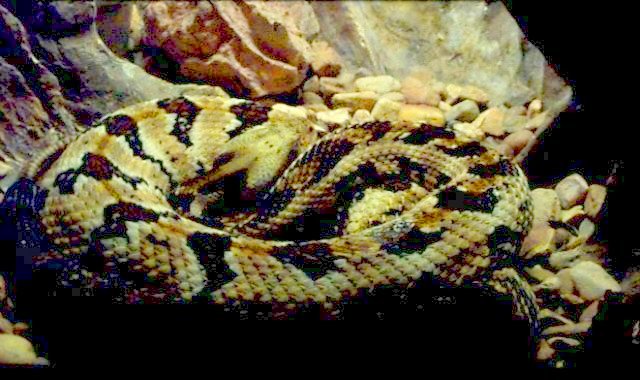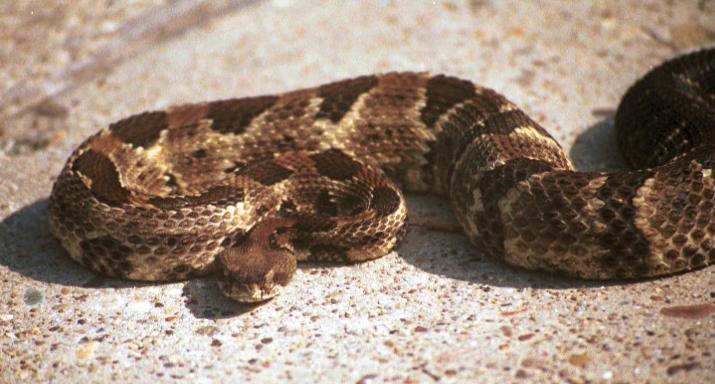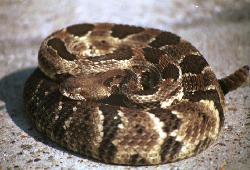Timber rattlesnakes hibernate in den sites, and often spend several
days in the spring basking near the entrance before they disperse. This
is known as “lying out”. They will stay close to the den site until temperatures
become warm. Pregnant females will usually remain around denning sites.
A second lying out period takes place in the autumn before they go down
into the den, but this tends to be a shorter period. In the east,
timber rattlesnakes are the only species that form reasonably large dens,
with over 200 members having been recorded at several locations earlier
this century.
Timber rattlesnakes are not a major threat to humans and livestock.
Death due to a bite is unlikely. This snake has a secretive nature and
prefers areas that are unused by humans. They remain quiet, and are often
reluctant to rattle, preferring not to call attention to themselves.
However, timber rattlers will become defensive and bite if disturbed. They
are capable of controlling the injection of venom when biting; up to 80%
of all poisonous snake bites to humans contain no venom.


